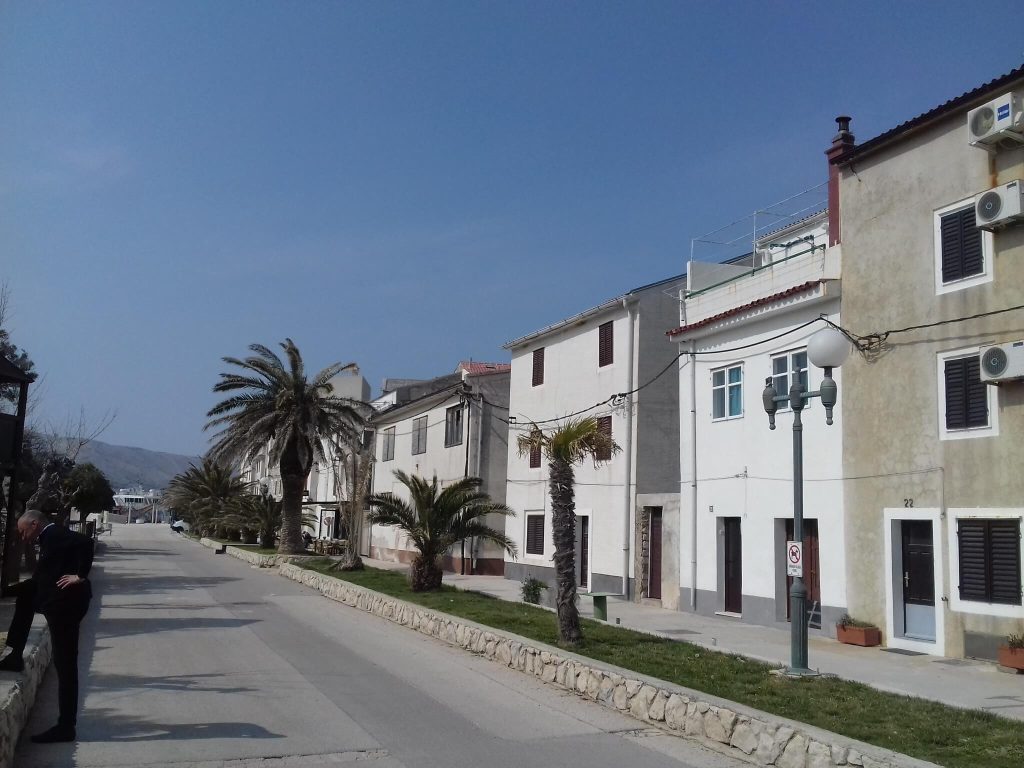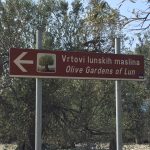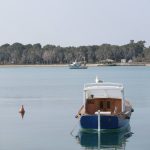April 1, 2018 – Continuing our coverage of the recent Gastronaut tour of Pag island, the first of three features dedicated to Pag town and its rhapsody in white
It’s a quiet afternoon in Pag town. Stores are closed, the streets empty, covered in a tangible veil of silence. Were it not for an occasional local dozing off in front of their favourite café, you’d think you walked right into a deserted film set. As you’re walking around town, it’s hard to fathom the place will transform into a tourist mecca in a couple of weeks.
The season is fast approaching; before long, there won’t be a single free spot in the entire plethora of benches lining the riva, colorful mosaics of magnets will pop up behind shop windows, sweet siren songs will be luring visitors to restaurant doors, humming promises of luscious Mediterranean delights. The town centre will soon turn into a living, breathing Tower of Babylon, but at this very moment, the stillness is uncanny.
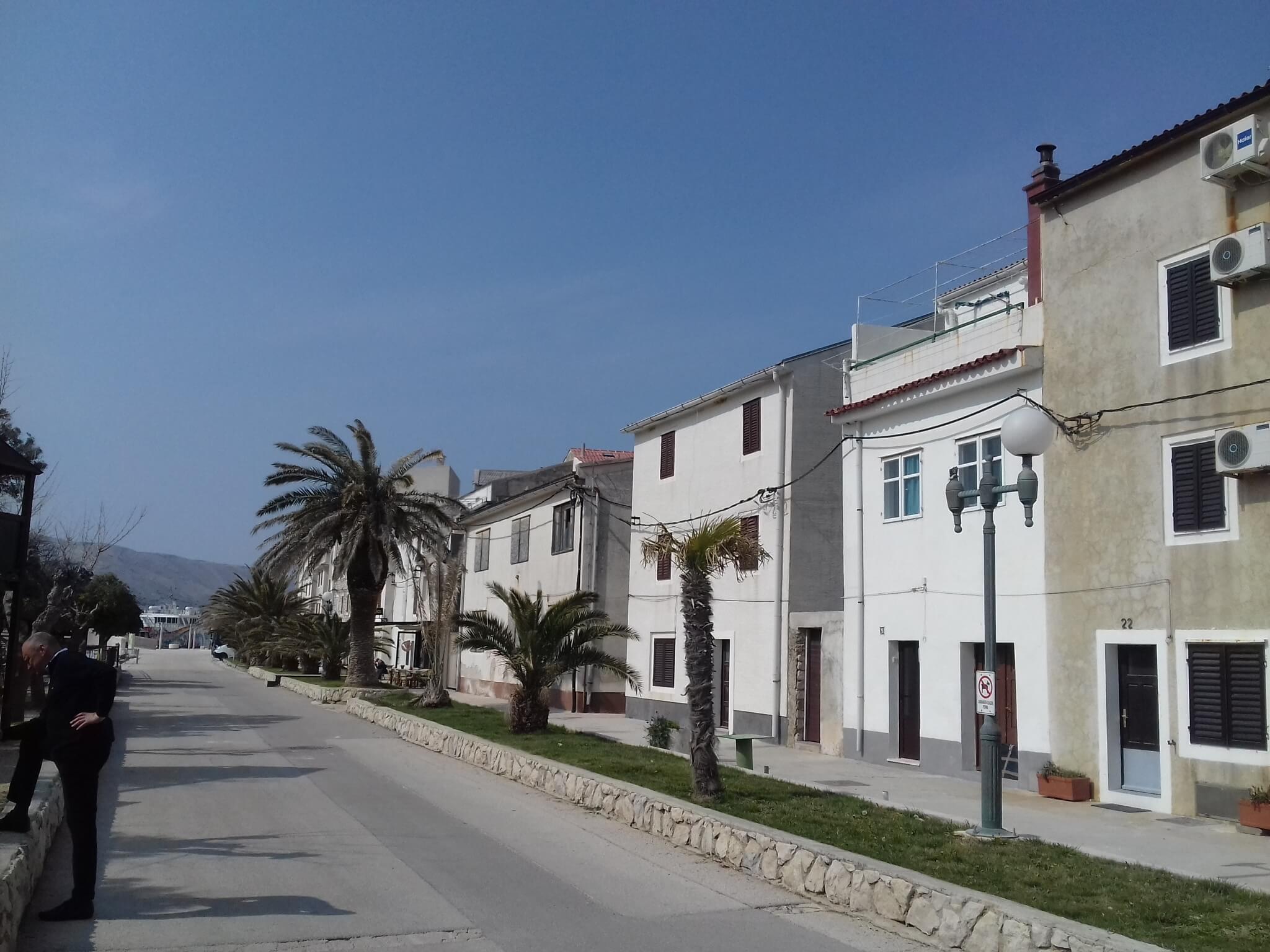
This town is an immortal bride, I thought as we made our way through the urban grid. Pag town, wrapped in an eternal layer of white, carved in stone, sprinkled with salt, donning a delicate lace gown. The island’s famous features, united in a single place. There’s too much to share at once, so it’s best to split the ode to Pag’s recognisable traits into several features, starting right at the beginning with a tribute to the town’s foundations and its unique historic development.
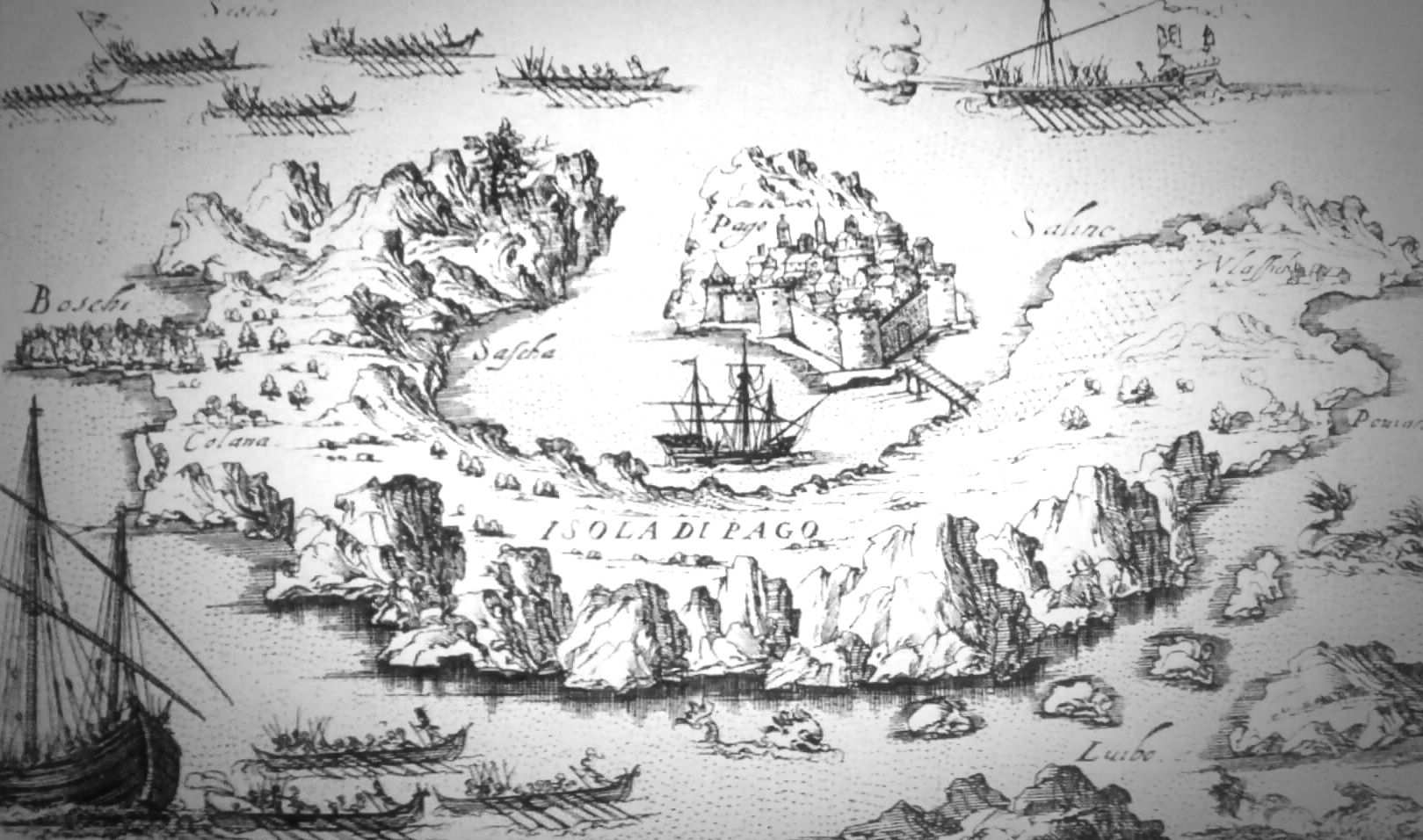
Unlike its neighbour Novalja, Pag town has no ancient stories to tell, no Roman or Greek origins to brag about. Instead, it stands out as one of the few Adriatic settlements built according to a specific master plan coined in the 15th century. As the Ottoman threat slowly started to loom on the horizon, inching towards the shores of the Adriatic, the residents of the historic Pag thought it a good solution to build a new town, encased in impenetrable defensive walls.
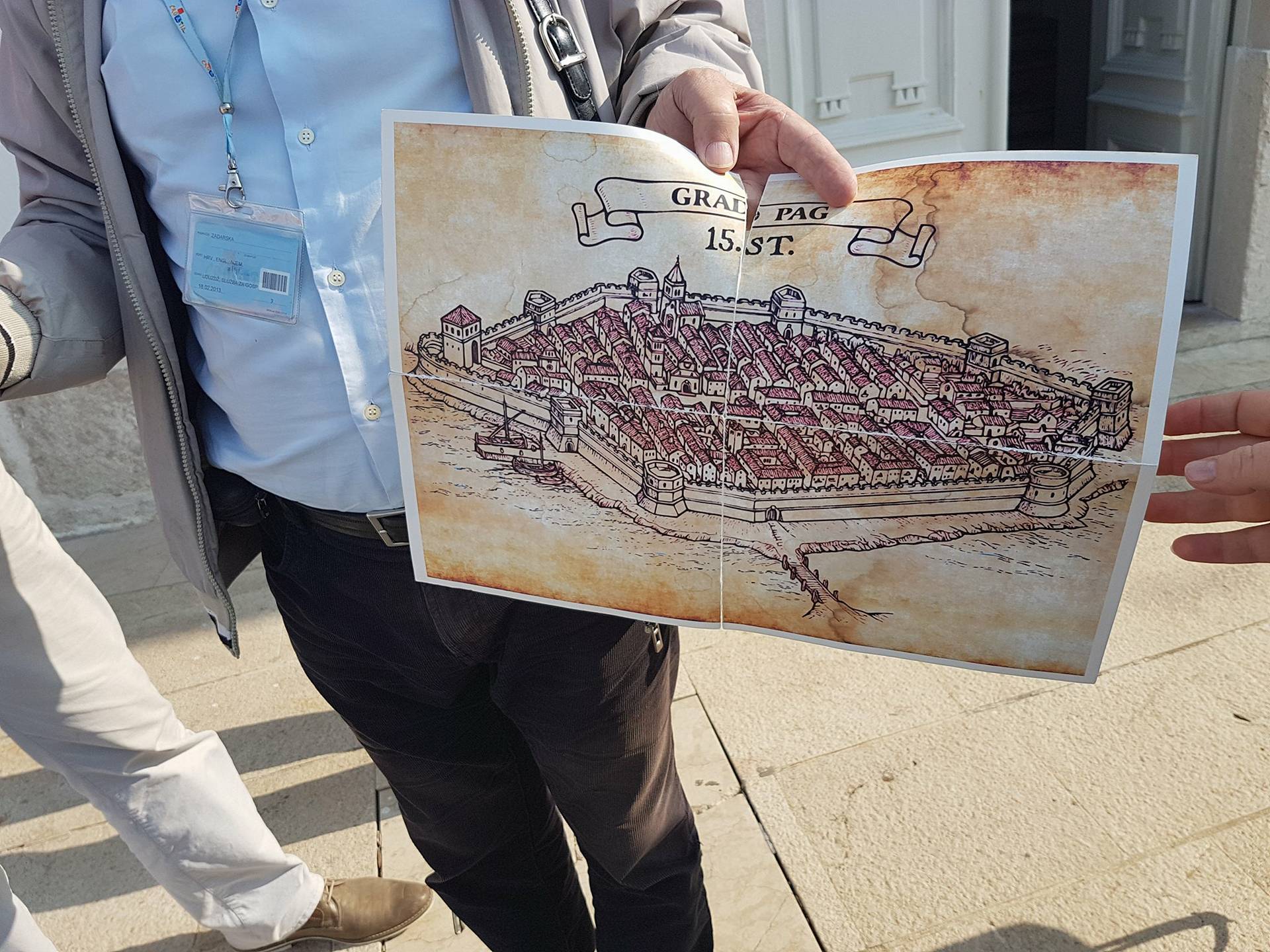
Considering the island was ruled by the Venetians at the time, plans and designs for the new Pag were developed in Venice, with a famous creative genius at the helm. Juraj Dalmatinac, the great Croatian sculptor and architect who we have to thank for two UNESCO gems – the cathedral of St. James in Šibenik and Minčeta tower, part of the majestic fortification walls of Dubrovnik.
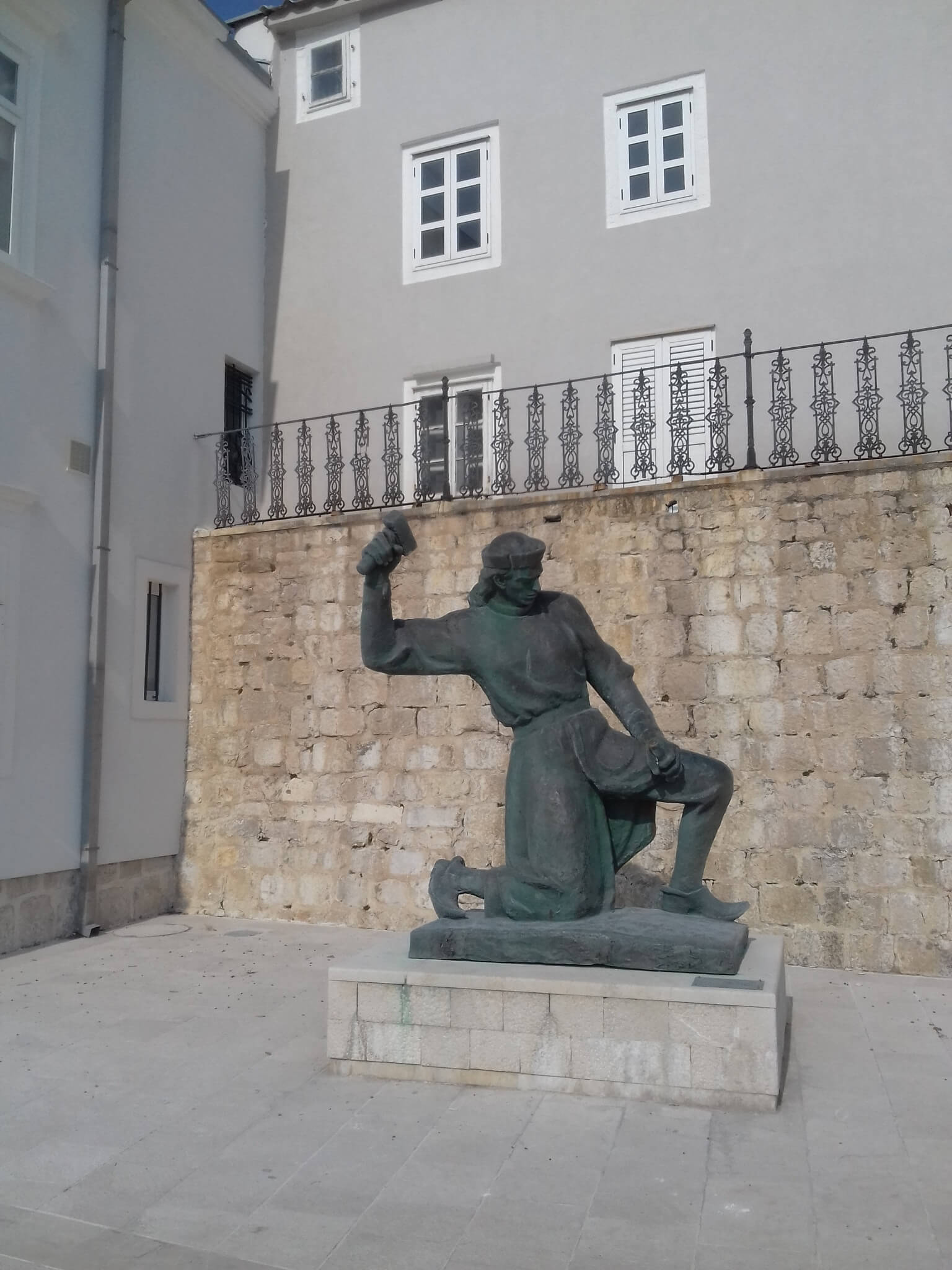
A bronze Juraj Dalmatinac at work
The new town started to take shape in 1443, strictly adhering to urban planning principles of the period: a rigid geometric grid, reminiscent of ancient Roman settlements, with longitudinal and transversal streets intersecting at right angles. Most of the walls were demolished in the 19th century, but enough have survived to give you an idea of what the town looked like at the time, including this semicircular fort and the adjacent tower:
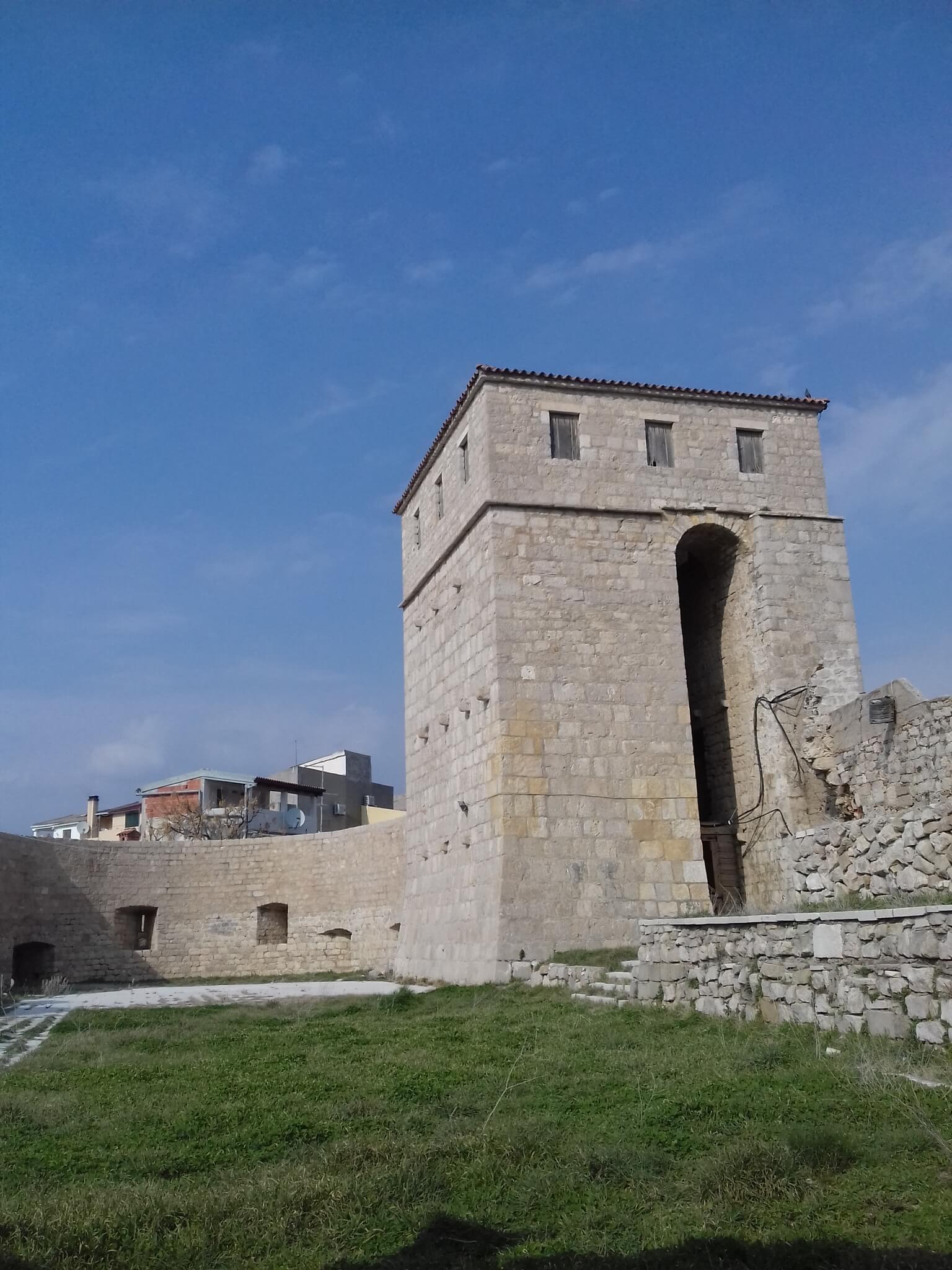
Turn a couple of corners, and you’ll find yourself on the main square, right in front of the basilica of the Assumption of Mary.
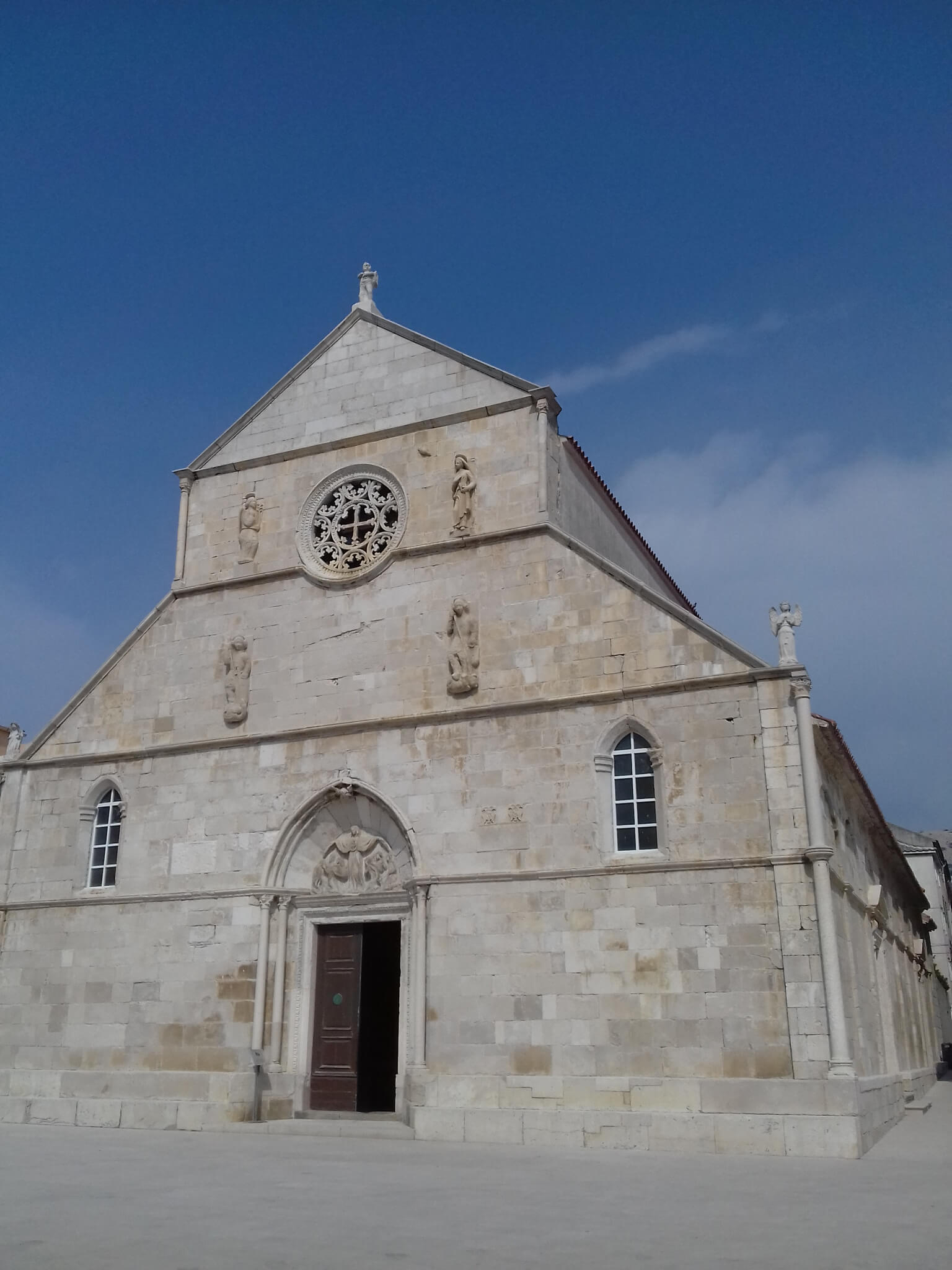
Another majestic creation of Juraj Dalmatinac, marked by a peculiar phenomenon later down the line. Right under the beautiful stone rosetta – one of Pag’s many white flowers – you’ll notice a wonky rectangular parcel of stone, a mysterious intervention on the elegant, somber facade.
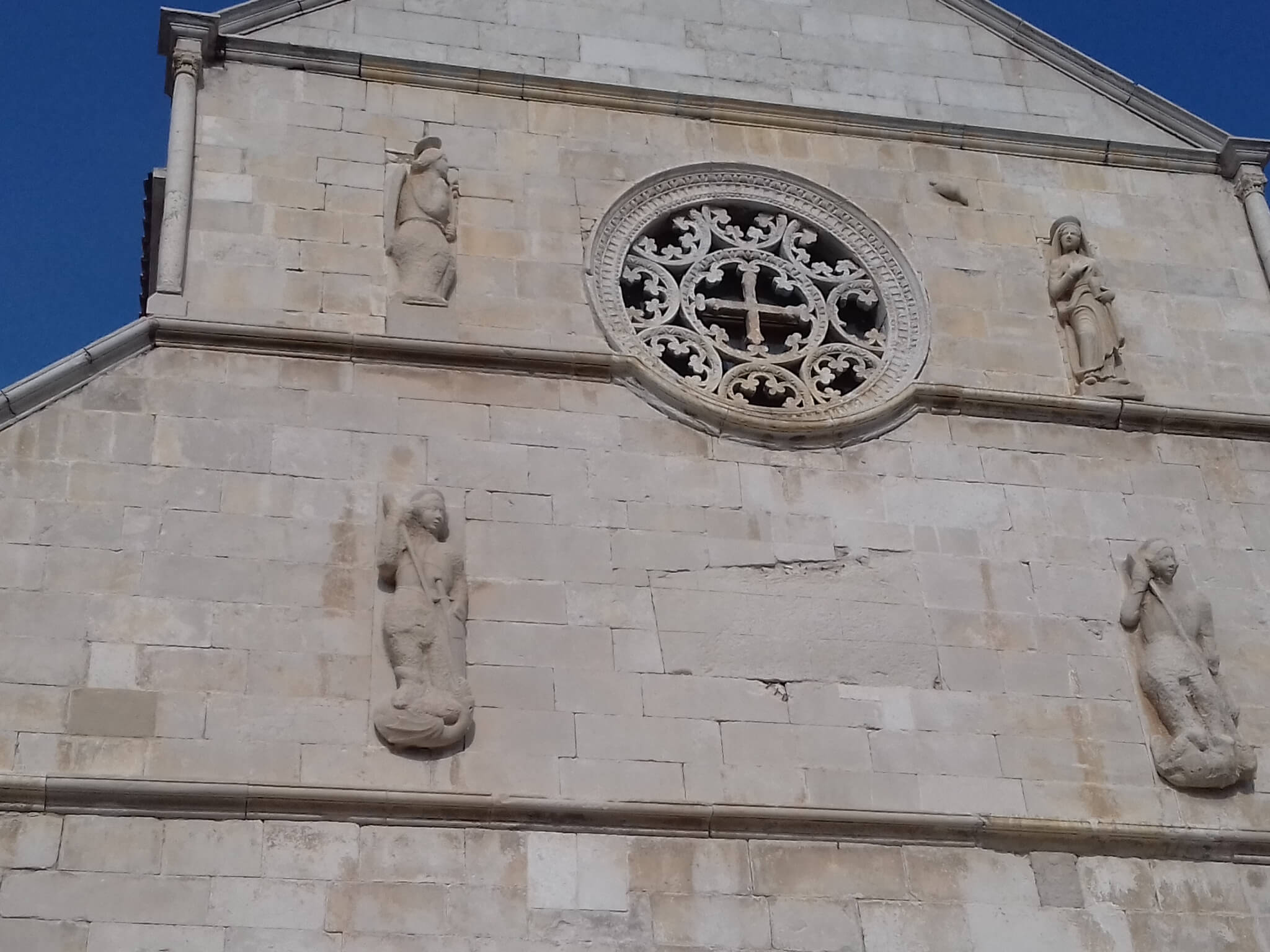
According to the local tour guide, there’s quite an interesting story behind this: after World War I, Pag was conquered by the Italian forces who ruled the island until 1921. Apparently, Mussolini had a specific philosophy based on his country’s late days of glory, claiming every settlement bearing the iconic Venetian symbol – the lion of St Mark – was inherently Italian. People of Pag didn’t take a liking to this theorem, so they purposely destroyed every stone lion in town, including a relief on the church facade. Another example of this specific case of damnatio memoriae can be found above a gate in the town centre, a hazy surface between a depiction of Pag on the left and several ships on the right – a Venetian lion, sanded down to anonymity.
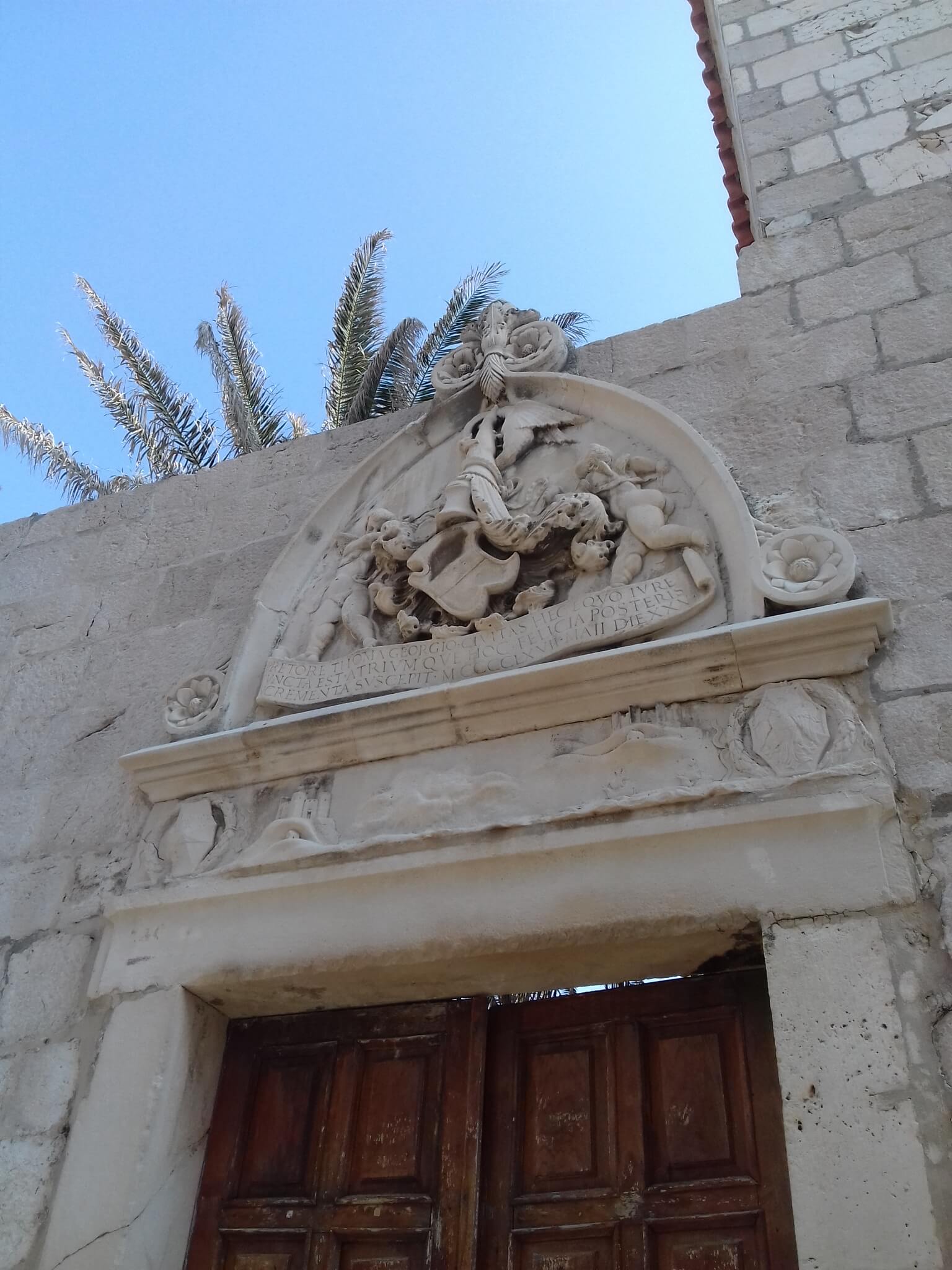
Next up, a short stop in front of the Benedictine church of St. Marguerite, once a lively centre of education and progress.
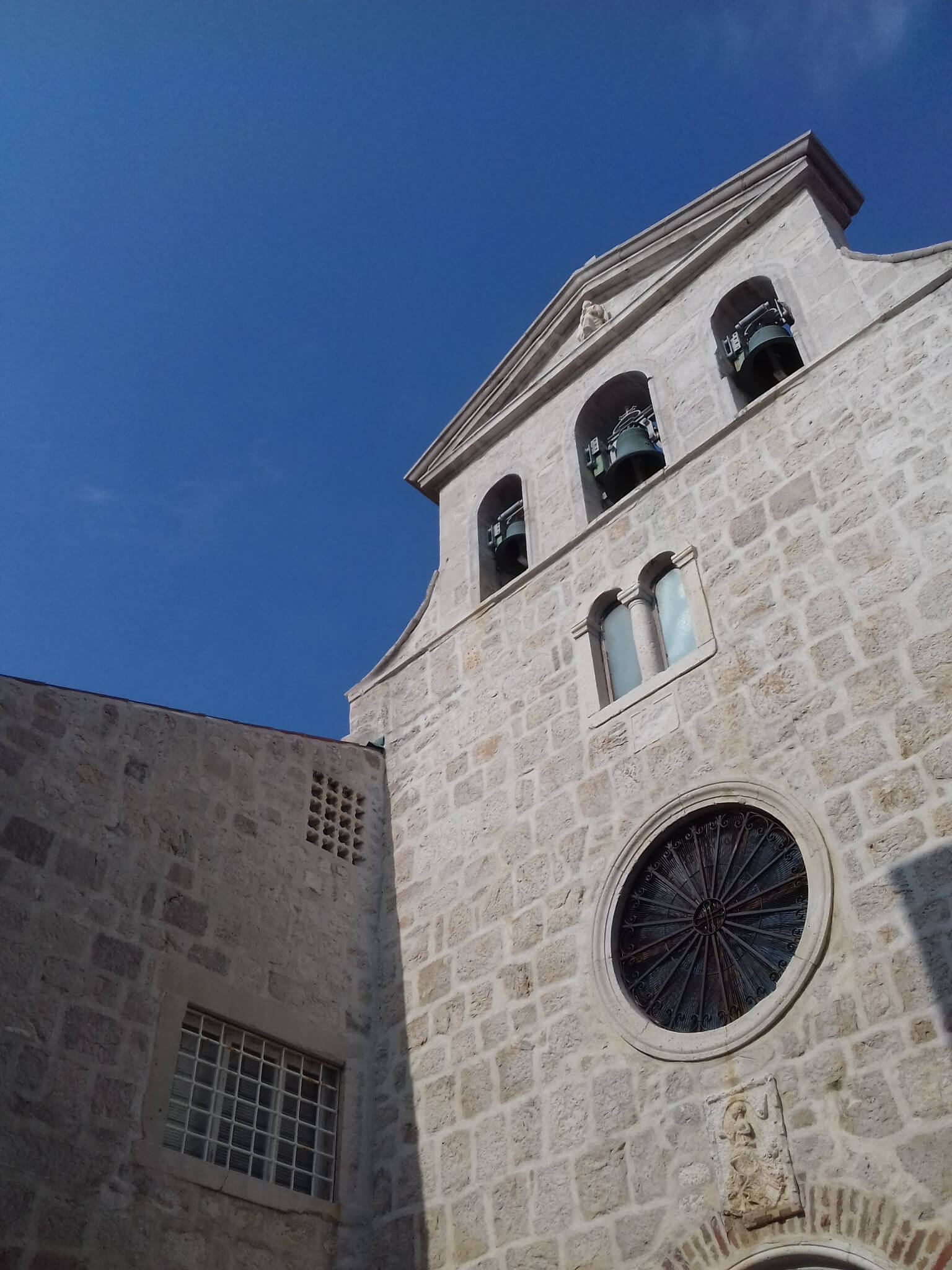
As a rule – a social standard of sorts – each family in town designated one of their daughters to live a life of faith, but before the girls took the vow, they were encouraged to pursue a degree so they could serve as respectable, knowledgeable teachers to the coming generations. Young women of Pag town were thus lucky enough to receive quality education from Benedictine nuns, including a Pag-specific skill: creating intricate lacework that made its way to the UNESCO list of Intangible Cultural Heritage of Humanity in 2009, along with its Lepoglava and Hvar counterparts.
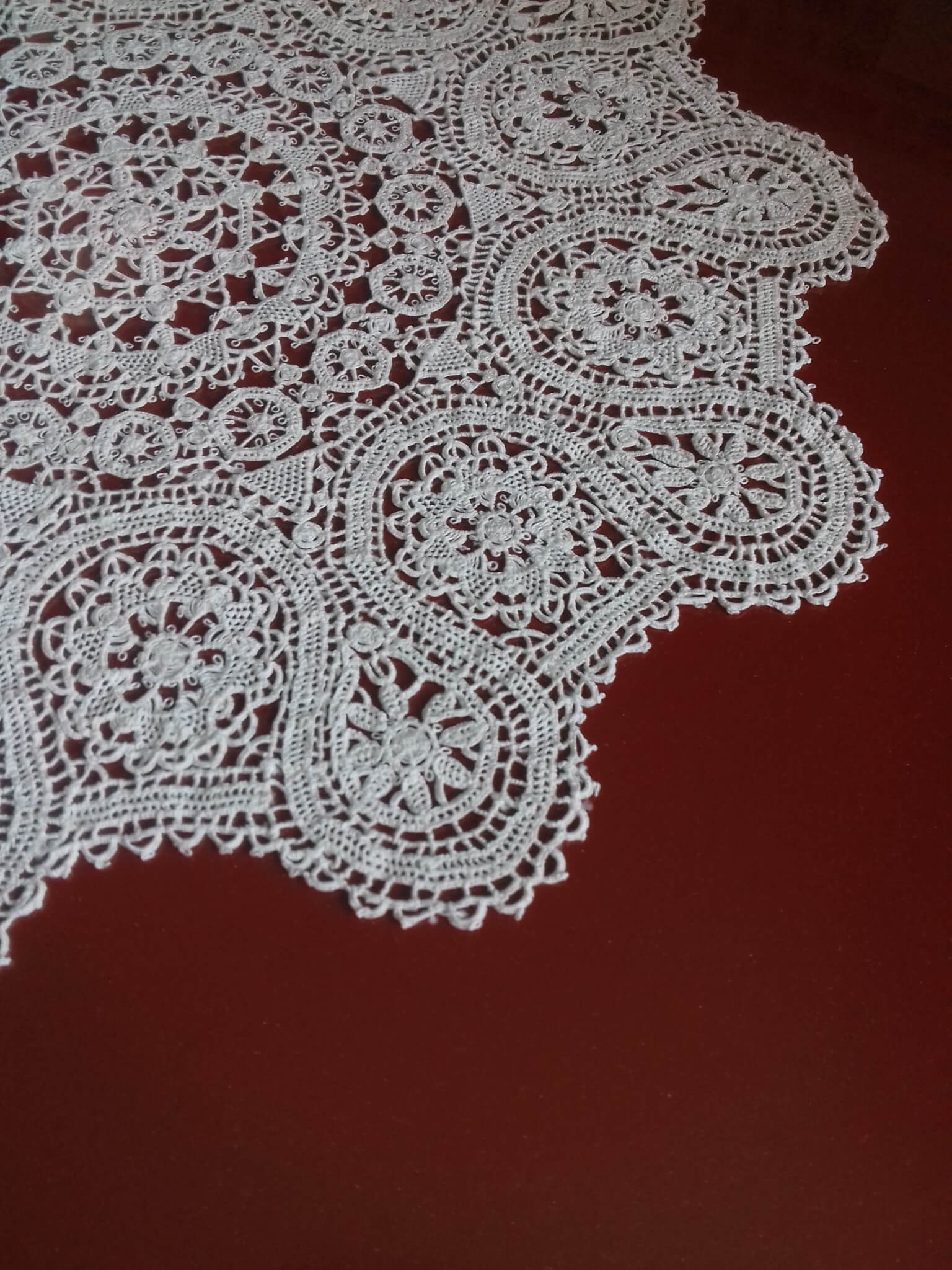
We’ll be paying a closer look to Pag’s famous lace in the second part of this short series, but for now, we’ll just admire the captivating display of blinding white stone, a union of nature and human creation in a single place. As soon as you set foot to Pag island, you’ll be enchanted by its rocky terrain, neverending stretches of karst relief resembling the surface of the moon – a stark contrast to the azure waters of the Adriatic.
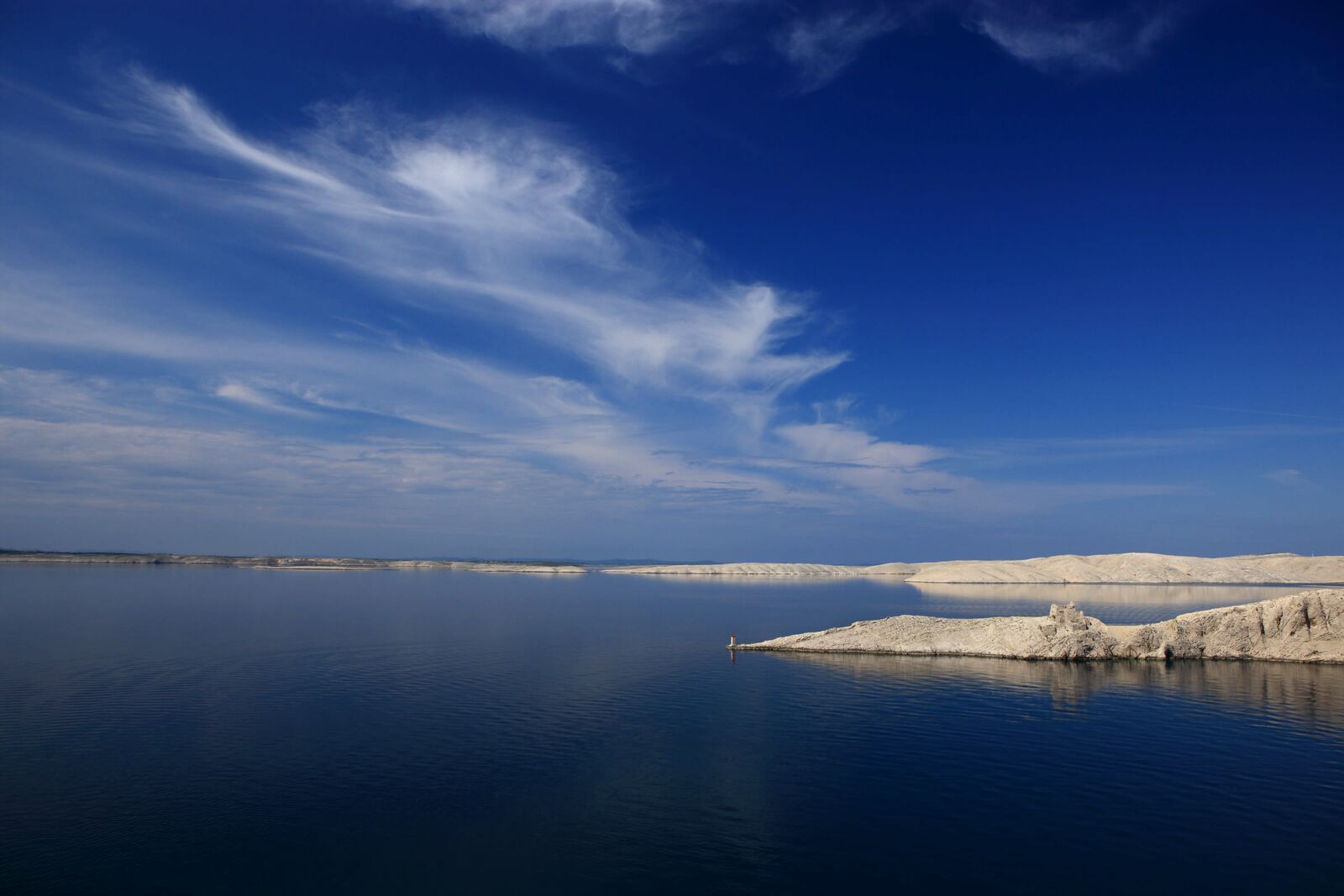
Romulić and Stojčić

